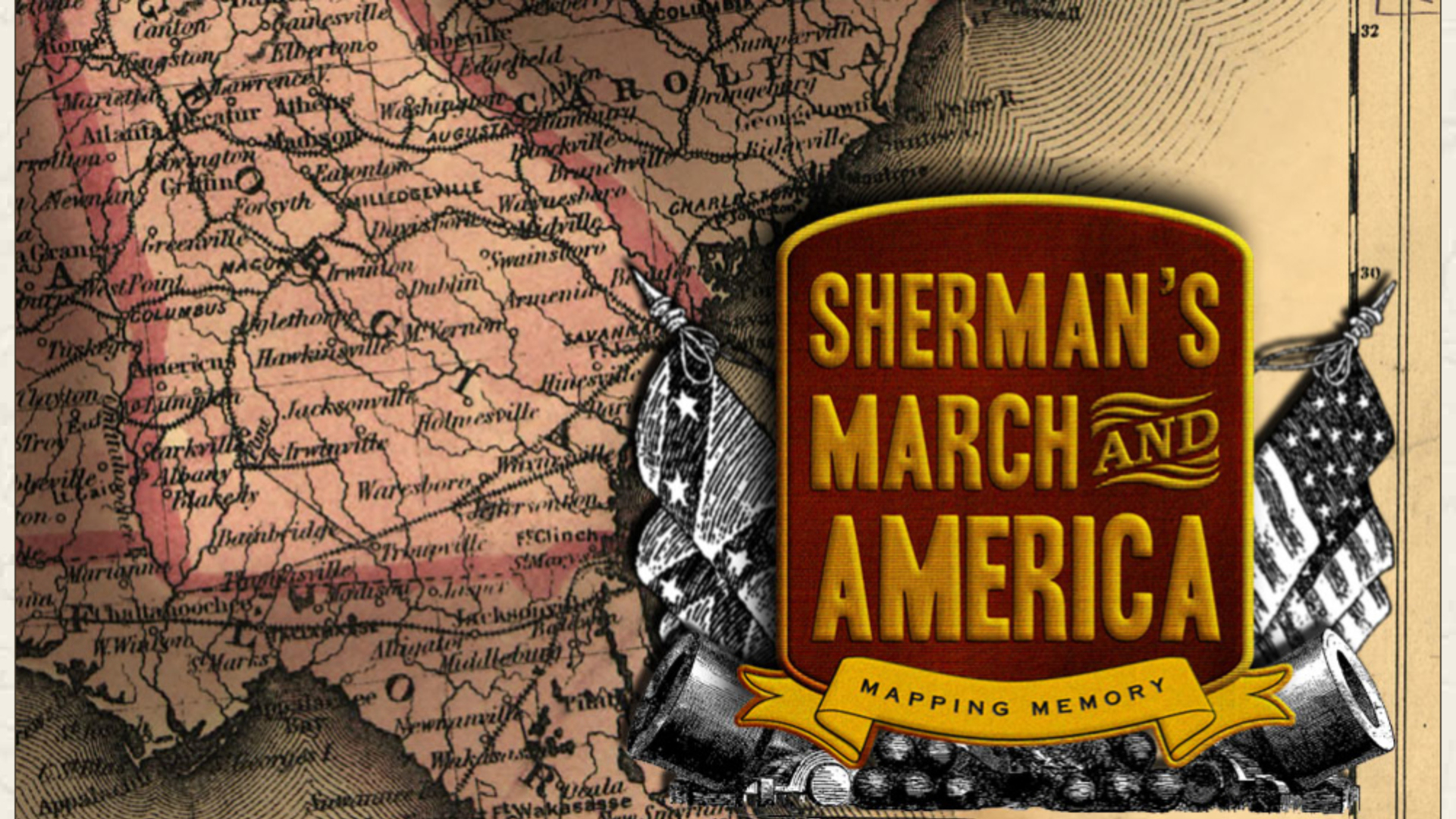
History Professor Anne Sarah Rubin received an American Council of Learned Societies(ACLS) Digital Innovation Grant in 2008 for her proposal to document the facts, myths, and perceptions of Sherman’s March during and after the Civil War. Part of this fellowship, written with support from the IRC, included funding for the IRC to design an innovative online site to disseminate the research. Visual Arts Professor Kelley Bell partnered as co-PI and designer for the project. Mapping Memory also functions as a companion to Dr. Rubin’s 2014 book, Through the Heart of Dixie: Sherman’s March and American Memory.
Mapping Memory uses digital media to explore the ways that Americans have remembered one event during the American Civil War – William T. Sherman’s march across Georgia in late 1864. Five different maps, representing five topical approaches, allow users to trace Sherman’s men’s path across the landscape. Each map has a variety of mini-documentaries keyed to locations on the landscape providing a kaleidoscope of perspectives ranging from former slaves to Southern white women, to Union veterans to modern tourists, to fiction to film, and to popular music. Rather than simply telling the story of the march, or building an archive of primary documents, Mapping Memory seeks to enter the debate over the interpretation of this important moment in American history. The project also includes a day-by-day blog of the March, from November 1, 1864, through February 1865.
The maps used in the site interface are drawn from the Library of Congress American Memory collection and other sources about the March. Under Bell’s and Rubin’s direction student interns and IRC fellows created short videos utilizing these images and others from the Civil War era, such as printed ephemera and documentary photographs, or they created their contemporary imagery in response to the original historic material. The diverse media used to create the short films presented in Mapping Memory (animation, video, and photography) reflects the numerous and subjective histories that follow in the wake of one of the Civil War’s most controversial campaigns.
The project also received funding from UMBC’s Vice Provost for Research, The Dresher Center for the Humanities, and an IRC SFRF awarded to Bell in 2013.
Mapping Memory has been presented at numerous venues in the United States, the Netherlands, and Scotland. Other publicity includes:
- “Marching into the Future,” UMBC Magazine, Winter 2011
- “Digitizing Sherman’s March” on Maryland’s Humanities Connection
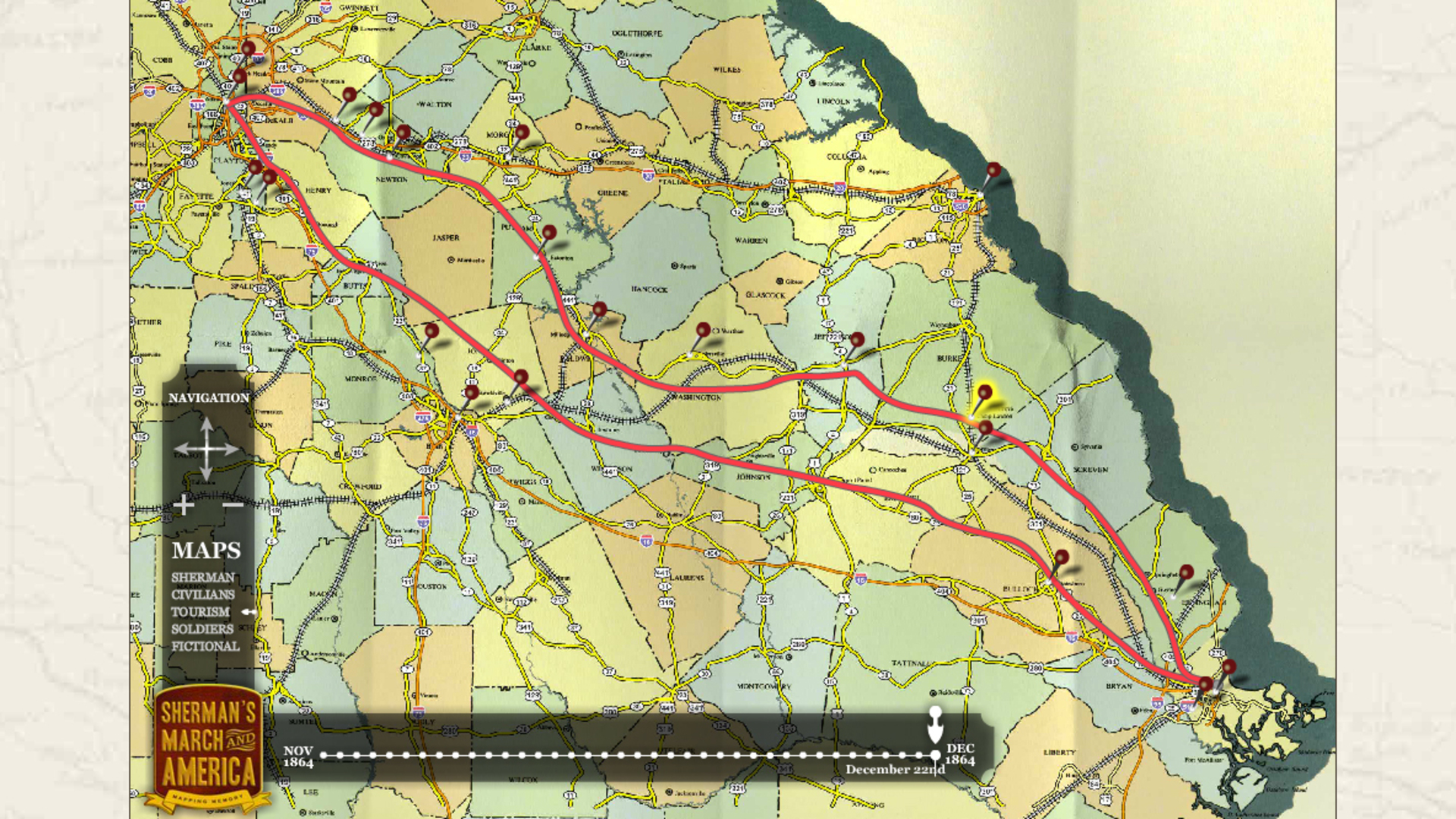
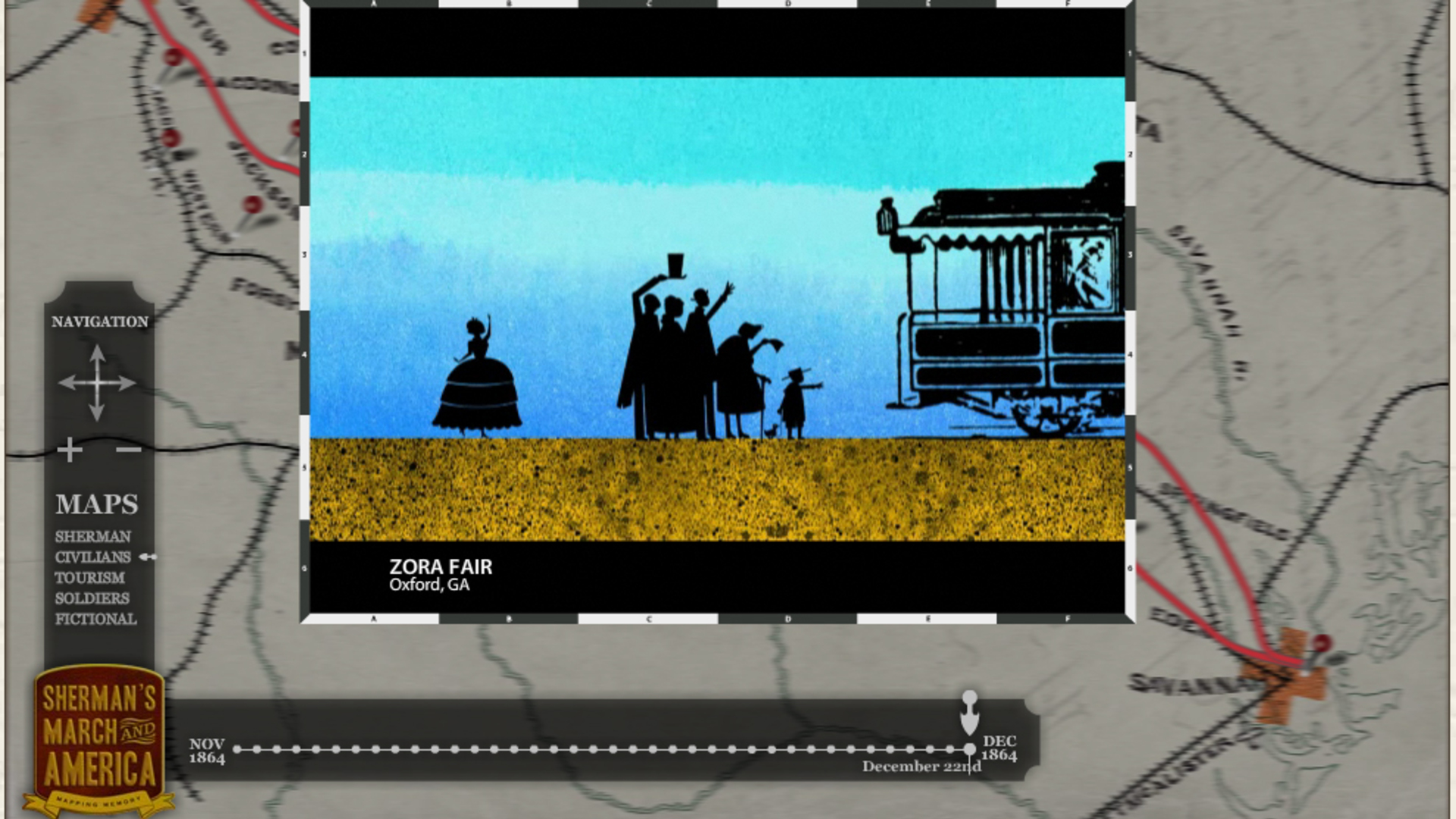
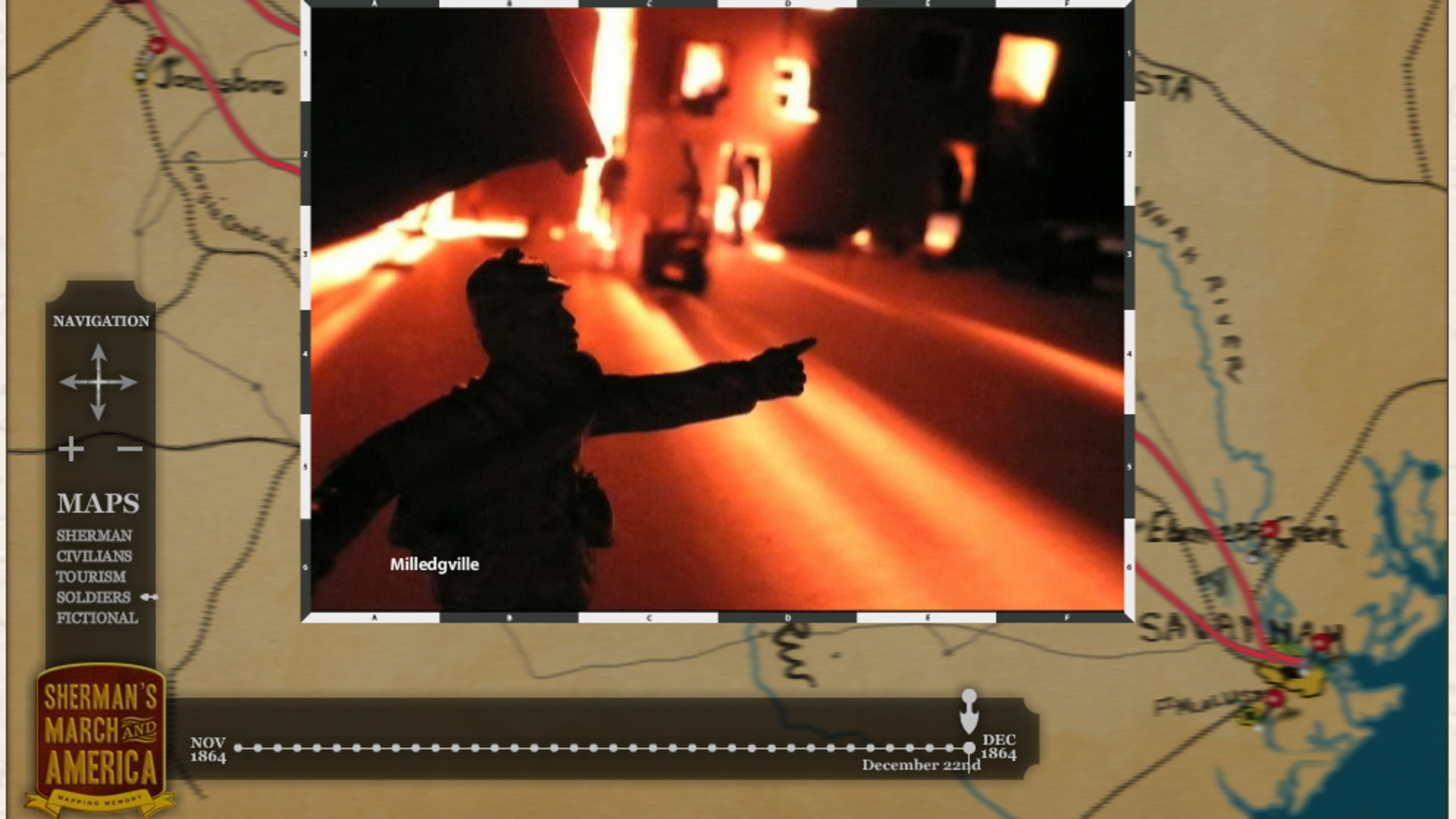
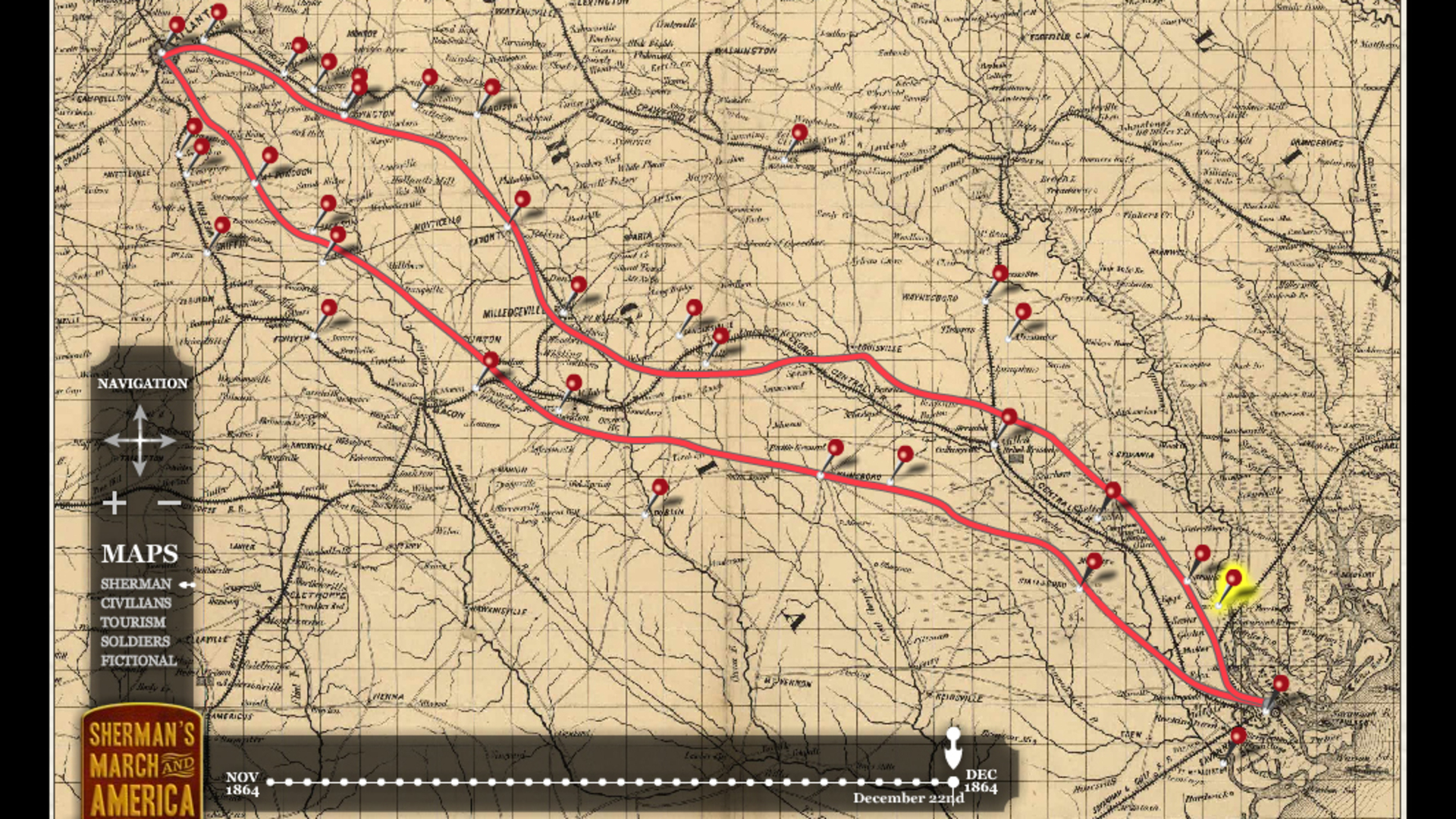
Researchers and Creators
Project Co-PIs: Anne Sarah Rubin, Kelley Bell
2009 Information and Web Design: Veronica Noone with Jamie Nola, and Andy Hsu
2013 Information and Web Design: Mark Jarzynski with Boris Boiko and Jeremy Neal
Sherman’s March Website: www.shermansmarch.org
Imaging Research Center, UMBC © 2024